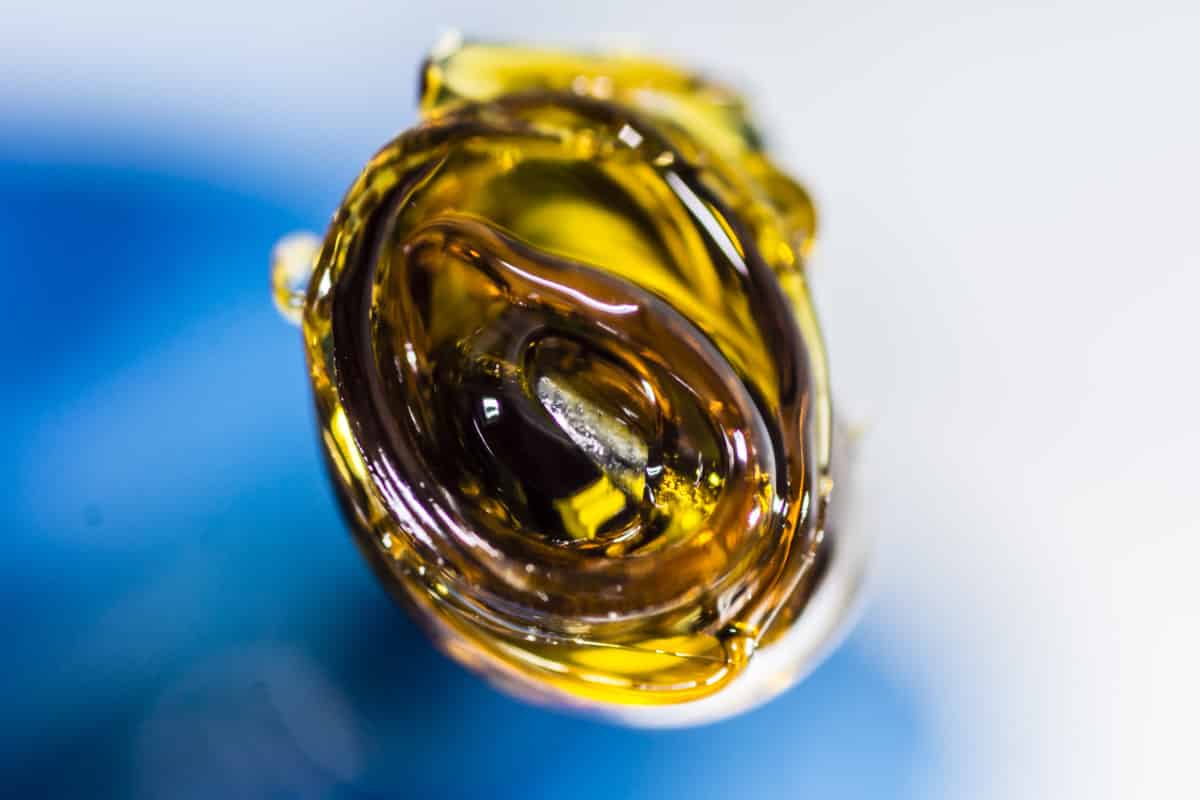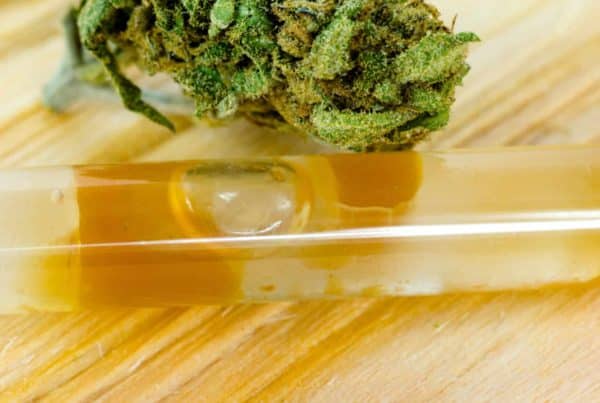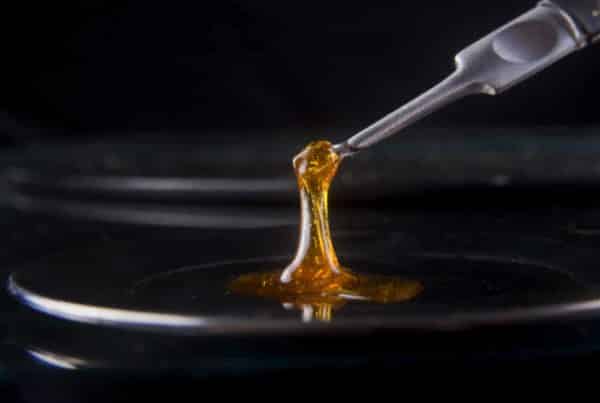Budder. Wax. Rosin. If you’re interested in cannabis and you don’t know what those words mean, you need to keep reading. Quantum 9 provides a comprehensive look at Cannabis Concentrate and Concentrated Products. Strip a cannabis bud of its plant material, and what remains is a substance that resembles sweet-sweet honey or golden oil. A cannabis concentrate is a highly potent extract derived from the flower.
Recreational cannabis laws are pumping money into the industry. The cannabis concentrate market is thriving. Eager manufacturers are pouring their resources into crafting mind-blowing products.
The future of cannabis is here, and it’s a concentrate. The first time you smoke a liquid cannabis electronic vape pen or take a hit from a dab rig, you’ll feel like Scotty just beamed you up to a place you never knew existed.
These devices are simply incredible. Even now, I sometimes stare into my vape pen as though it’s an object from another, better universe – where technology really is my friend, and the robots aren’t about to take over.
But with great power, comes great responsibility. What the heck is in these things?
Concentrate! Here is everything you need to know about cannabis extracts.

cannabis oil
Terpenes And Cannabinoids
Cannabis plants are chock-full of chemicals and compounds. Everything that you love about cannabis revolves around its chemical makeup. A cannabis concentrate is more potent than a bud of a flower because the extraction process gets rid of the inactive compounds.
Cannabinoids
Every cannabis consumer should know about cannabinoids. They’re the chemical compounds secreted by the same glands that produce terpenes.
You’ve probably heard of at least one cannabinoid- THC. Another important one is CBD. They affect you by mimicking compounds that your body naturally produces.
Terpenes
Terpenes are pungent oils that give cannabis plants their distinctive smell and flavor.
Crack open a fat nugget of cannabis and a rich aroma swarms into your nostrils. It may be citrus-sweet and reminiscent of a Florida fruit grove, or it might be musky and earthy.
Quality concentrates start with high-quality cannabis flowers dripping in terpenes. Some extraction methods intensify the terpenes’ aroma, giving consumers a heightened flavor experience.
Brief History of Cannabis Concentrates
Humans have been tinkering with Cannabis plants for thousands of years. Early extraction methods were simple- people would rub thick buds together between their hands, collecting the terpenes and cannabinoids that dusted their figures.
The sticky dust would then be compressed into a paste known as Charas (a Hindi word for hashish).
Eventually, the process improved. Powerful Hashish is created by rubbing fat cannabis flowers against a screen, freeing the psychoactive compounds before compressing them with heat and pressure.
Hashish and simple cannabis oil-infused tinctures were the sole cannabis concentrates available until the mid-1950’s. That’s when the industry turned to botanical science to refine its methods.
Cannabis Concentrate Vs. Flower: What’s The Difference?
Cannabis. The word conjures images of prickly green buds and curling hazes of smoke. Consuming a cannabis concentrate, however, is a wildly different experience than smoking a joint or using a bong. Here’s why:
1. It’s All About The Potency
Cannabis flowers aren’t nearly as potent as most concentrates. The extraction process focuses on teasing out terpenes and cannabinoids. Buds are thought to be strong if they measure 25 percent; a talented extract technician can produce concentrates pushing 90 percent.
Inexperienced cannabis consumers are sometimes too nervous try concentrates.
“In media outlets, cannabis concentrate is referred to as potentially more dangerous than herbal cannabis due to higher potency,” reads a study published in Natural Products Chemistry & Research.
“Although the average THC concentration of concentrates is much higher than the average concentration in flowers the relative composition is similar. It is, therefore, expected that physiological effects should be similar for concentrates and flower if the dose is corrected for the concentration difference.”
Proper dosage matters. Consuming concentrates doesn’t mean that you have to be blasted to the moon. Start with a low-THC option and work your way up.
A CBD-rich concentrate will allow you to experience all of the benefits of medicinal benefits of cannabis without becoming intoxicated.
2. Concentrates Go By Many Names
There are enough cannabis strains in existence to fill a book with nothing but their names. Asking your budtender to sample a nug of Lemon Haze isn’t very different than asking for a sprinkling of Girl Scout Cookies. You know that you’re getting flower buds.
Concentrates are different. Not only are there tons of different terms to remember, but it’s also harder to figure out what they mean. Shatter refers to the consistency while CO2 refers to the extraction process. Rosin refers to both the final product and how it’s made.
Don’t worry; you’ll get the hang of it.
3. Concentrates Are Administered Differently
There’s not much that you can do with plain cannabis flower. You can grind up the nugs and use the dust to roll a joint. You can pack a bong or a pipe to take a hit, and you can even vaporize the buds if you’re feeling fancy.
That’s about it though. The space-age technology infiltrating the cannabis industry so focused on the cannabis concentrate market.
There are a lot of different ways to administer a cannabis concentrate.
- Dabbing refers to a process where a small amount of concentrate is applied to a hot surface and inhaled through a glass piece. Dabbing can be daunting for new users, but it’s an effective way to get a powerful blast of cannabinoids.
- Tinctures are cannabis-infused alcohol concoctions, drops of which are placed under the tongue. They can also be used to create edibles. They’re fast acting but less potent than other forms of concentrates.
- Ingestible oils can be consumed with food with food or beverages or taken as a capsule. People who are looking for a smoke-free way of consuming cannabis should look into these oils. They’re typically rich in THC and CBD
- Hash is often consumed like flower. People enjoy smoking it in pipes or vaporizing it with specially made devices. Experienced cannabis consumers sometimes mix hash oil and fresh buds to create super potent joints and bong bowls.
Extraction Methods: Solvent Vs. Non-solvent
A lot of people classify cannabis concentrates by their appearance. Budder is known for its rich, creamy texture while Shatter looks like a piece of hard candy.
What’s really important, however, is how an extract is made.
There are two main ways to create a cannabis concentrate- solvent-based extraction and non-solvent extraction. In solvent-based extractions, chemical solvents are used strip cannabinoids and terpenes from the plant. In non-solvent extractions, the same end is achieved by manipulating temperature and pressure.
It’s important to know what your ingesting. That’s why you need to know how different cannabis concentrate is produced. Every product won’t work for everybody.
Solvent-based extracts dominate the market. Recreational cannabis laws have ushered in a host of new regulations. Regulators now demand that concentrate manufacturers pay attention to safety concerns, alleviating the risks of using chemical solvents.
Solvent-based extracts are also the most potent. The process barely damages the plant, cannabinoids are leeched of its cells by the solvent, and the structure of the flower stays intact.
Because of this, the terpenes aren’t destroyed. The heady smell that most cannabis consumers associate with strong buds is retained in solvent-based extracts.
However, a lot of people still favor non-solvent extracts. They’re considered to be “purer” because you don’t have to use any harsh chemicals to create them. The drawback is that they tend to be more expensive and less potent.
Solvent-based Extraction
Solvent-based extractions rely on chemical solvents to separate cannabinoids from the flower to make cannabis concentrate. It’s a highly technical, dangerous process that requires proper lab equipment to be performed correctly.
Cannabis buds are soaked in the solvent mixture until the plant dissolves, leaving a runny mixture referred to as “slurry.” At this stage, the cannabinoids are still mixed with traces of the solvent.
In order to transform the slurry into a product that can be sold at dispensaries, the remaining solvent must be purged. There are a couple of ways to do this. A technician might use a vacuum yank undesirable compounds from the slurry or he might “hand-whip” the mixture until it’s acceptable.
Butane Hash Oil (BHO)
Also known as honey oil, BHO is the most popular cannabis concentrate on the market right now. The extraction process uses Butane as a solvent. High-THC cannabis buds are placed in a tube before being blasted with butane, freeing the plant’s cannabinoids.
Cannabis lovers can’t get enough BHO.
CO2
CO2 extractions manipulate pressure or temperature until the right conditions are produced to pull cannabinoids and terpenes from cannabis plant material. The method also referred to as supercritical CO2 extraction, takes advantage of the volatile of C02 when it’s exposed to high temperatures and a massive amount of pressure.
In it’s “supercritical” state, CO2 is capable of ripping apart cell structures, allowing extract artists to pull out the cannabinoids.
Consumers like CO2 oil because it’s more “natural” than BHO.
Alcohol
Alcohol is one of the most popular solvents. It’s cheap, safe, and cannabinoids and terpenes dissolve into easily. When isopropyl alcohol is used, the process is known as “QWISO,” or quick-wash isopropyl alcohol.
QWISO extractions require almost no equipment.
Cannabis Concentrates Produced With Solvents
CO2 Oil– often found in pre-filled vape oil cartridges. Expect to pay at least $40 per gram.
Budder/Wax– a thick, “whipped” substance with a mild aroma. Budder is usually a bit creamier than wax. You’ll probably about $15- $35 a gram at the dispensary.
Live Resin– a sticky oil produced using frozen cannabis. Freezing the plant after harvesting it preserves its terpenes and cannabinoids remarkably well. Expect to pay about $50 a gram.
Shatter– a thin wax that’s easy to snap apart. Consumers love its rich flavor and strong aroma. Prices are as low as $20 a gram.
Honeycomb/Pie Crust– a “crumbly” concentrate that’s pressed into a patty after the excess solvents have been purged. The patty resembles a real honeycomb. Most dispensaries price it between $20 and $40 a gram.
Rick Simpson Oil (RSO)– popularized by the famous Rick Simpson, a man who cured his cancer with Cannabis, the oil is prevalent among medical marijuana patients. It’s an old-fashioned product that’s tough to find in modern dispensaries.
Non-Solvent Extractions
Non-solvent extractions use temperature and pressure to agitate cannabis buds, causing the plant’s resin glands to break free and release their cannabinoids and terpenes.
Connoisseurs love that the process doesn’t depend on using strange chemicals. Non-solvent cannabis concentrates are thought to be safer to ingest than their counterparts.
However, most non-solvent extracts will be less potent than those produced with a solvent. They’re also a lot more expensive. Non-solvent processes require a technician with more skill and higher-grade cannabis than solvent-based ones.
Creating a quality concentrate is like cooking a good steak. The starting product matters as much as the process. This is especially true in non-solvent extractions.
Cannabis Concentrate and Concentrated Produced Without Solvents
Kief- specialized filters are used to separate active compounds from cannabis buds. You can extract your own kief by using a three-chamber grinder. Kief dust will naturally fall to the bottom.
Bubble Hash- ice, water, and “bubble bags,” are used to filter unwanted plant material. Quality bubble hash is rich with terpenes, producing a strong smell. You can find at dispensaries for $25-$50 a gram.
Dry Sift- kief that has been refined to ultra-purity. Expect to pay about $15 a gram.
Rosin- a popular method that you can try at home. Dense nugs of trichome-rich cannabis are heated and compressed until a sticky, potent oil seeps out. Home enthusiasts can use wax paper and a hair straightener to make their own.
Conclusion
The world of cannabis concentrates is vast, and it’s getting bigger. Freshly implemented recreational laws mean that new dispensaries are popping up like buds on a tree branch.
Consuming a cannabis concentrate can seem scary at first, but it doesn’t have to be. Careful dosing and paying attention to your body will allow you to enjoy the benefits of potent cannabis without becoming overwhelmed.
Experiment! Maybe you want to try out a dab rig. Maybe you want to grab your hair straightener and make your own rosin.
If you want to know more about cannabis concentrates, keep checking out our blog. We’ll keep you up-to-date. You can also leave comments to share your thoughts on the use of cannabis.








it will reverse the carcinogenic effects of tobacco and improve lung health, control epileptic seizures, decreases the symptoms of a severe seizure disorder and also a chemical found in marijuana stops cancer from spreading.